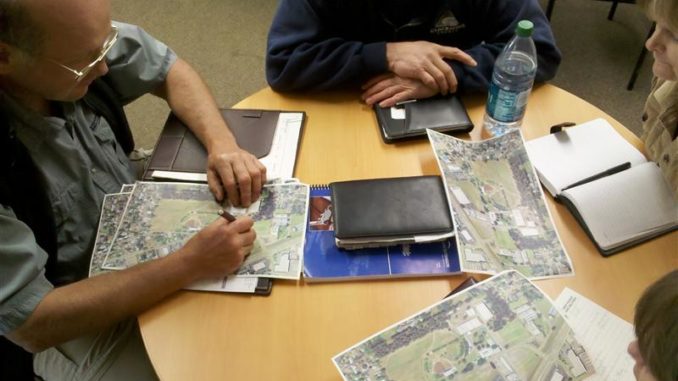
We call our new farm the Beavercreek Demonstration Farm. Using the word “demonstration” raises a couple of questions:
- Does the Clackamas County Soil and Water Conservation District have authority to own a farm?
- Does the District have authority to conduct demonstrations on land?
- What kind of demonstrations might the District engage in?
Does the District have authority to own a farm?
The short answer is: yes. Oregon Revised Statute 568.550(1)(e) authorizes soil and water conservation districts to acquire real property: “…To obtain options upon and to acquire by purchase, exchange, lease, gift, grant, bequest or devise any property, real or personal or rights or interests therein…”
Does the District have authority to conduct demonstrations?
Again, the short answer is: yes. ORS 568.550 describes the general powers of the board of directors of a soil and water conservation district, and includes the statement that: “The board of directors of a soil and water conservation district has the following powers…To conduct demonstrational projects on lands within the district upon obtaining the consent of the owner and occupier of such lands.”
Since the District is the owner and occupier of the farm, we would give ourselves permission to conduct demonstration projects.
What kind of demonstrations might the District engage in?
Wikipedia says “A demonstration farm is a farm which is used primarily to demonstrate various agricultural techniques…” Demonstrating different techniques aimed at helping small farmers better manage their renewable resources is the primary reason for our acquisition of the Beavercreek Demonstration Farm.
Farm is set up for grass hay and livestock
The existing farm is constructed to support the production of grass hay and grazing animals. We don’t see this changing anytime soon. We are currently testing soils and evaluating the irrigation system with an eye toward improving the quantity and quality of grass hay production.
Add riparian components
The straightened stream provides a great place to show the habitat available in a straight ditch right next to a section with restored meanders. We’ll be able to show how shade improves habitat for fish and other creatures.
Control invasive species
Farms often have invasive plants, and managing them can be expensive and time consuming. We may show different types of weed management to demonstrate the effectiveness of various methods at the scale of a small farm.
Improve the irrigation system
Often, a farmer with a small acreage will see what works on larger farms and try to scale those solutions down to fit on the smaller farm…and sometimes that doesn’t work well. Irrigation systems are a case in point. We’ll be analyzing our existing system to see what can be improved, and we’ll demonstrate the impact of system changes.
Add pollinator habitat
Showing how to add pollinator habitat without adversely affecting crop production is one of the conservation practices we’d like to demonstrate.
What do you think we should do?
Hearing your ideas about what we could do on the farm to demonstrate different ways of managing small acreages will be very helpful.
Let us know what you think we should do:
[contact-form subject='(Farm website)’][contact-field label=’Name’ type=’name’ required=’1’/][contact-field label=’Email’ type=’email’ required=’1’/][contact-field label=’Comment’ type=’textarea’ required=’1’/][/contact-form]